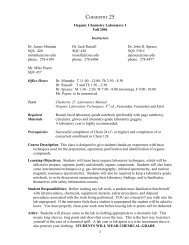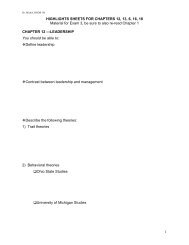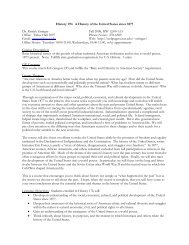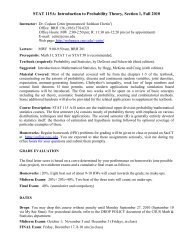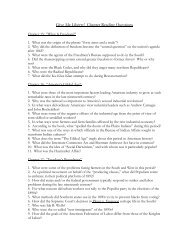final text
final text
final text
You also want an ePaper? Increase the reach of your titles
YUMPU automatically turns print PDFs into web optimized ePapers that Google loves.
9manganese (III) chloride] is readily and cost effectively prepared in three steps andis commercially available. 11,12 Asymmetric synthesis of (3S,6S)-6,7-epoxycitronellyl pivalate is made possible by the use of this reagent. Figure 5shows the structure of Jacobsen’s catalyst. This catalyst is reported to work beston synthesizing enantiomerically rich epoxides from cis-alkenes. 13-15t-BuHNOt-BuMnClHNOt-But-BuFigure 5. (S,S) Jacobsen’s catalystThe mechanism of the epoxidation and source of stereochemical selectivity13, 16has been proposed by Jacobsen and Houk. Duringthe addition of the oxygenatom across the double bond of an alkene, attack is only made possible in oneconfiguration due to the stereochemistry of the particular Jacobsen’s catalyst beingused (R,R or S,S). A stoichiometric amount of NaOCl (sodium hypochlorite,commonly known as bleach) is used during the epoxidation. This is the source ofthe oxygen atom. The proposed catalytic cycle for the Jacobsen’s catalyst isshown in Figure 6. 16As shown in Figure 7, due to the presence of two bulky t-butyl groups oneach side of the Manganese-oxo intermediate, attack of the alkene is only possible



